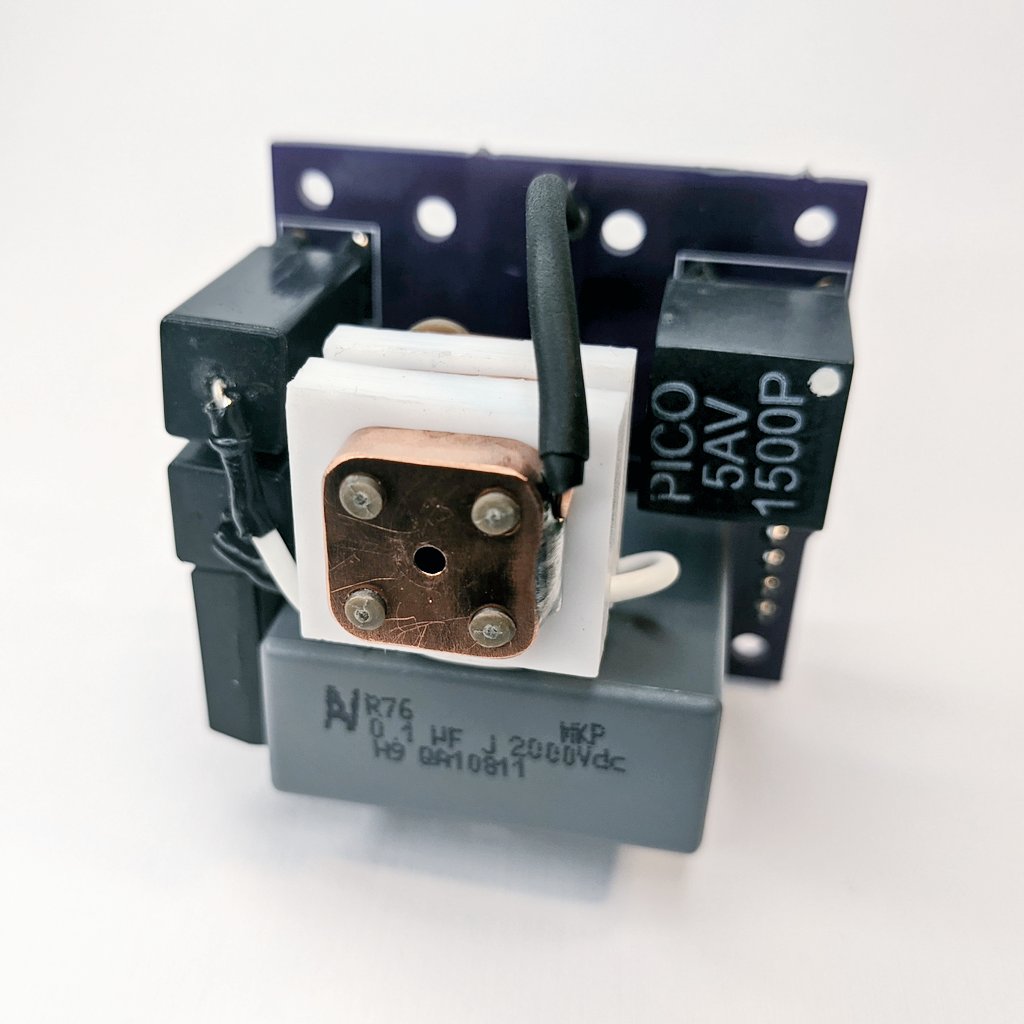Recently, I have been working on improving the performance of my PPT systems. Taking the already tested and qualified AIS-gPPT3-1C thruster head, and the new AIS-EPPT1 thruster board, I merged the two systems into a hybrid thruster for higher rep-rate PPT tests.

Yesterday was the first ignition test of the hybrid gPPT3/EPPT1 micro pulsed plasma thruster system. The test got off to a rough start, with only a few spurious pulses and an onboard failure. Fixing this, and trying again, the system wasn’t looking too great, so I decided to slowly turn up input. Cranking it up higher and higher, farther than the rated 5V in of the Pico supply, I was able to start firing reliably at the highest repetition rates I have achieved yet with PPTs.
Here is a second video of the PPT operating at slightly reduced rep rates of a bit more than 3Hz. I drove this tiny micro pulsed plasma thruster to its knees, at over double it’s normally rated voltage levels and far higher stable rep rates than I’ve achieved to date.
The little gPPT3 thruster head pulled through, and undoubtedly can go even higher. While I had to way overdrive the EPPT1 electronics, it shows what I need to do moving forward. Taking lessons learned from testing, I will push ahead on an even higher rep rate pulsed plasma source.
Normally, PPTs are not operated at these rep rates. Unlike their metal fueled vacuum arc thruster counterparts which can fire at 10s of Hz, they are typically run at less than 1Hz, maybe 2Hz at most. I want to push the performance even further for such a small low-cost system. Major take-aways from this test: –
- The gPPT3 thruster head can operate at high rep rates
- The Pico supplies are absolutely amazing and can be pushed way over spec
- Polypropylene film caps are a massive improvement over prior specialty MLCC pulse caps and 10x cheaper
The gPPT3 files are already out, and I will work on retiring the EPPT1 development and releasing those design files as well. With that, I will begin working on a new system design incorporating the gPPT3 head with further improved and higher power electronics to see how far it can go.
